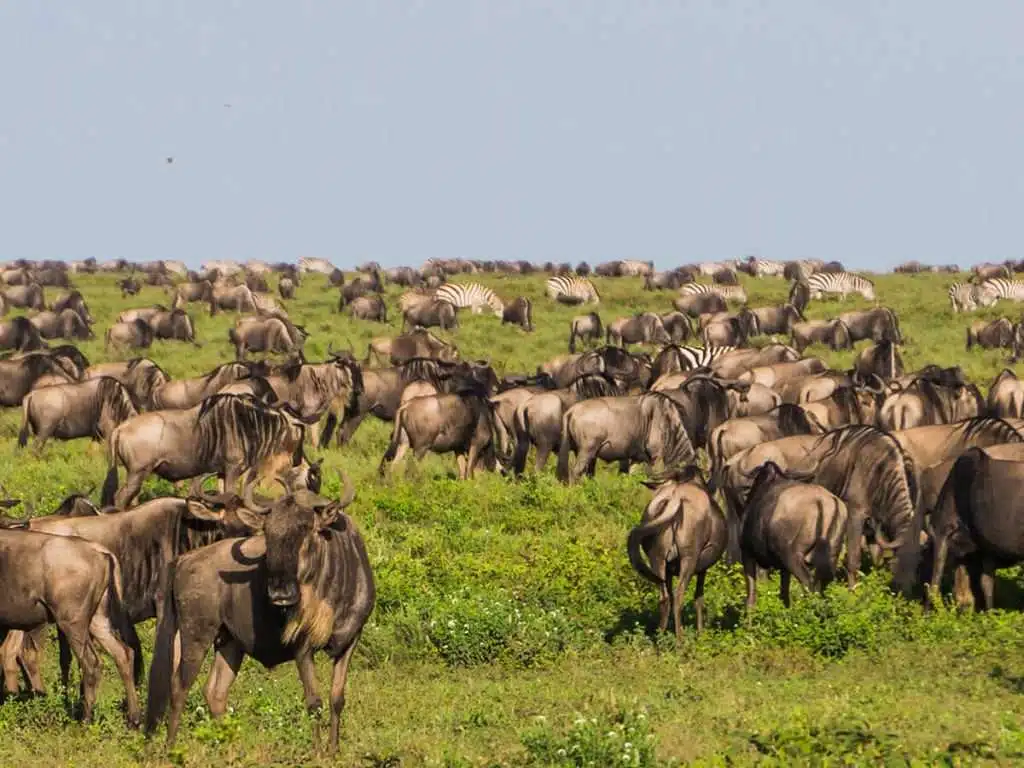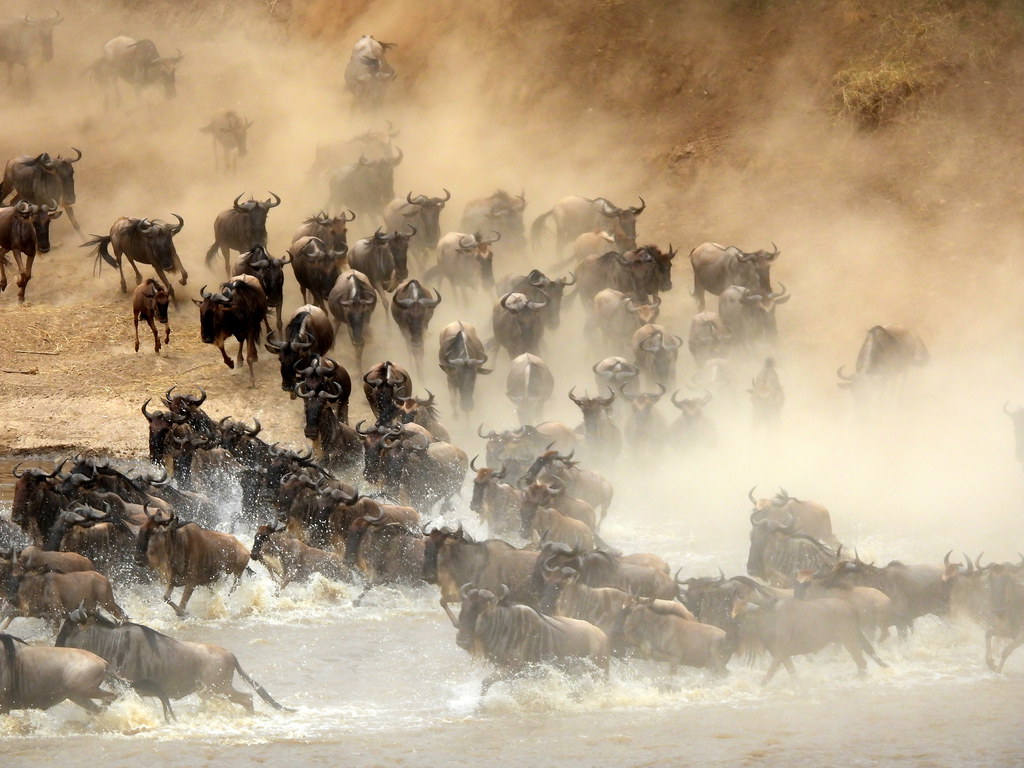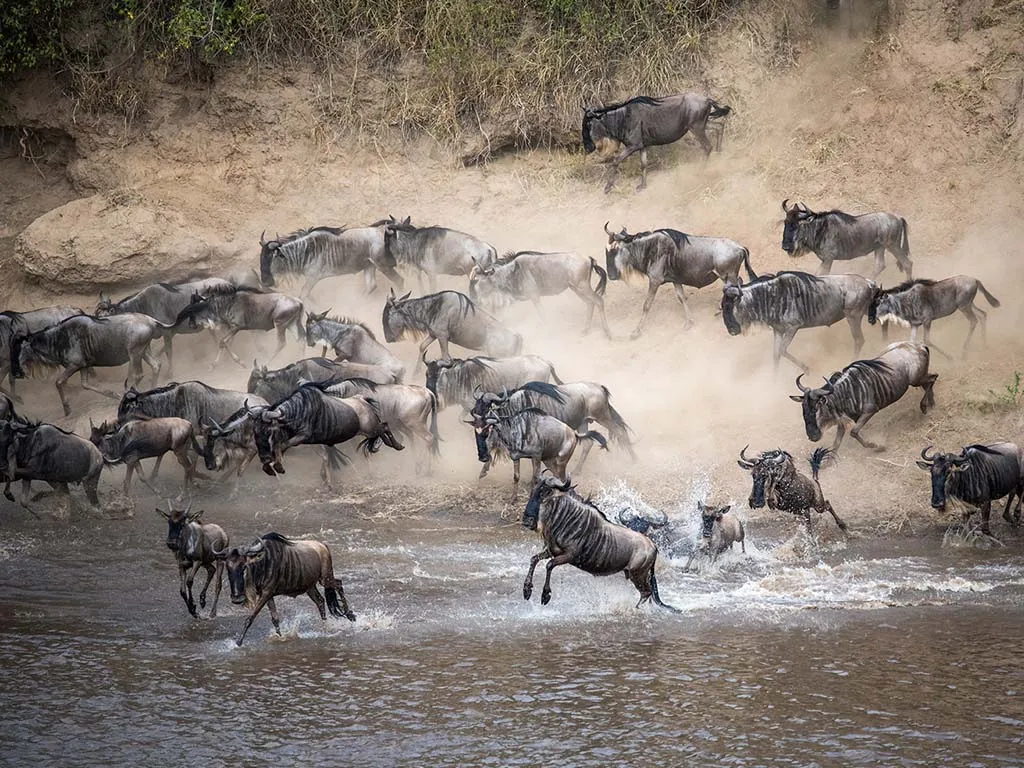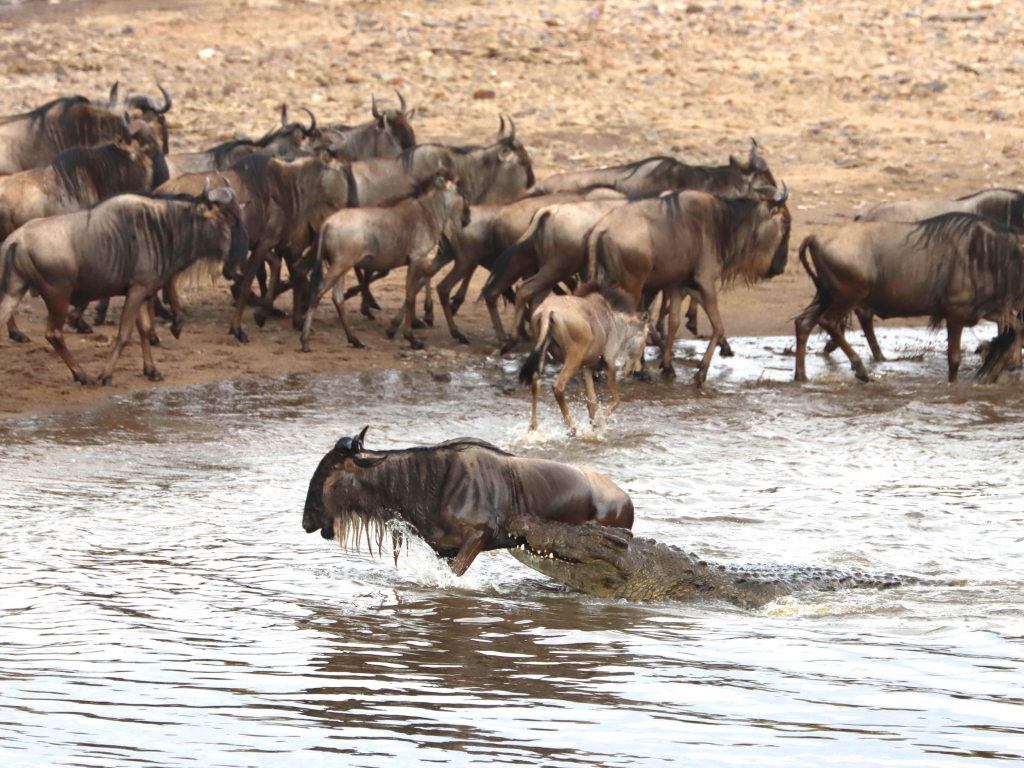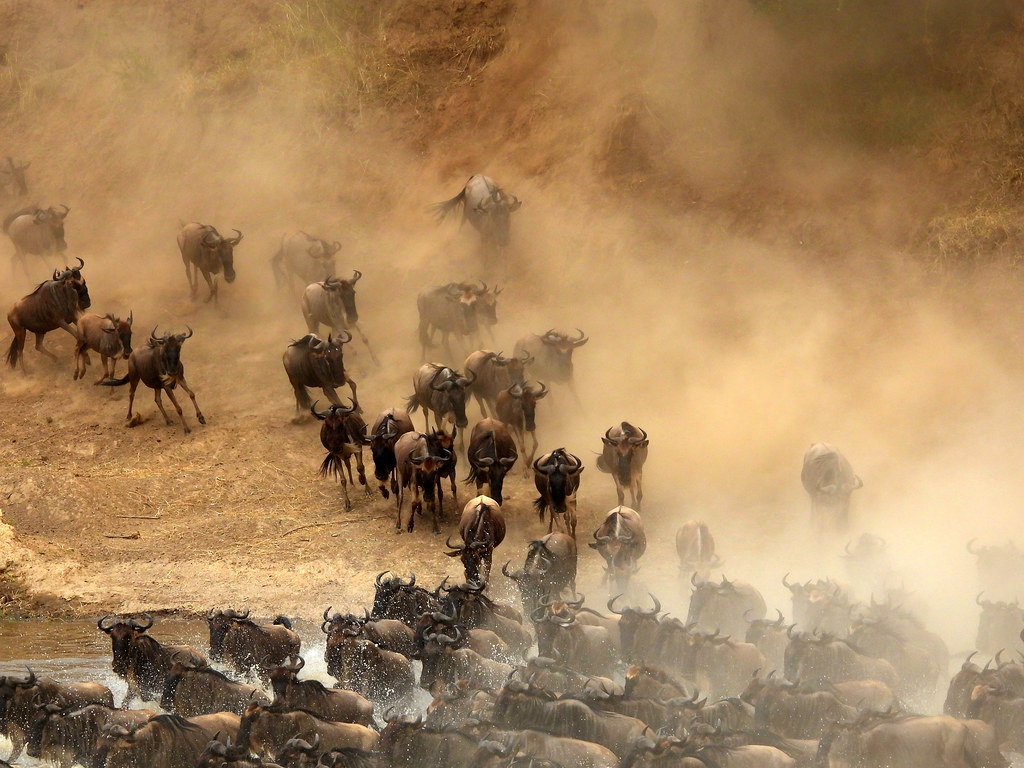Every year, more than two million wildebeest march from the Serengeti plains to the Masai Mara.
This is one of the greatest animal migrations in the world. As the massive wildebeest herds journey north, covering nearly 1,000 miles, they encounter perilous river crossings and predators.
Witnessing the movement of the wildebeest is an astounding experience. Here’s what you need to know about the great migration and how to experience this natural wonder for yourself.
Quick facts:
|
The Great Wildebeest Migration
What is the Great Wildebeest Migration?
Where is the great wildebeest migration – the migration path
When is the great wildebeest migration?
What month do the wildebeest migrate?
How many wildebeest are in the great migration?
When to travel to see the great migration
Great migration safaris
What is the Great Wildebeest Migration?
The great wildebeest migration refers to the constant movement of animals in a looping path from Tanzania to Kenya and back again.
The wildebeest follow seasonal rains, trekking from the dry Serengeti in search of lusher grass in the Masai Mara. The animals spend most of the year in Tanzania’s Serengeti, with only a few months wandering across the Masai Mara.
The clockwise march of the wildebeest is the circle of life in action. The search for greener pastures leads the wildebeest through dangerous territory, creating dramatic spectacles which make the great migration one of the most incredible sights in the natural world.
The wildebeest face down prides of lions and rivers teeming with crocodiles. They lose hundreds of thousands of their number in the search for food and water.
How many wildebeest are in the great migration?
More than 1.5 million wildebeest move north during the great migration.
As well as the wildebeest, around hundreds of thousands of zebras make the journey, along with elands and gazelles.
Where does the Great Wildebeest Migration take place?
The Great Wildebeest Migration takes place across vast swathes of the Serengeti and part of the Masai Mara.
The wildebeest migrate in a large circuit. As such, there is no defined beginning or end point.
However, the start of the migration is generally considered to be where the young calves are born at the start of the year – the birthing grounds on the eastern fringe of the Serengeti, on the border with the Ngorongoro Conservation Area.
From here they move north across the western edge of the Serengeti, before crossing the border into Kenya and the Masai Mara.
The loop closes when the wildebeest travel south again, through the Lobo area of Serengeti National Park, until they arrive back where they started.
When is the Great Wildebeest Migration?
The wildebeest migration isn’t a one off event – it’s happening all year round. The search for food and water is continuous.
Although the annual pattern of the wildebeest migration is fairly predictable, the precise timing of the migration depends on rainfall patterns.
The wildebeest arrive on the plains of the Serengeti in late November and December. Spreading out across the plains, the wildebeest gorge on the grasses that grow in the wake of the short November rains.
Between January and March, around half a million calves are born.
Around April, when the Serengeti becomes drier and grass scarcer, the wildebeest begin the migration north.
By May, herds of wildebeest and zebra are slowly moving north, hunting for better grass and water. The columns of marching wildebeest can reach up to 40 kilometers long.
July and August are typically the months with the most action, when the wildebeest must brave the rivers that lie between them and the Masai Mara.
In September, the herds of wildebeest are in the Masai Mara, where they stay until the rains arrive again in late October. At this point, the wildebeest begin to head south, making their way back to the Serengeti. By the end of the year, they return to their calving grounds in the Serengeti.
When to travel to see the great migration
If you plan on visiting Tanzania or Kenya to see the Great Wildebeest Migration, you probably want to be in the thick of the action.
The unpredictability of the wildebeest migration means you can’t plan to be right by a river as a herd of wildebeest plunge into the muddy waters.
But at any time of year, you can see herds of wildebeest on the move. Each month offers a different perspective on the migration.
From January to April, you can see Serengeti National Park at its greenest. This is when you’ll see young wildebeest calves, as the wildebeest herds graze in the southeast and Ndutu are of the Serengeti. This is the time of year when the big cats pounce, hunting the young and taking advantage of the sheer numbers of wildebeest.
Between May and July, visit the western corridor of the Serengeti to see large groups of wildebeest and zebra.
From late July to August, head to the Serengeti Mara area. This is the best time to see the Great Migration if you want the high drama of wildebeest leaping from crocodiles’ snapping jaws as the animals plunge through the river. It’s also worth noting that this is when the highest number of tourists visit the Masai Mara.
During September, you can see the wildebeest roaming around the Masai Mara. Then, in October and November, visit the northern Serengeti and Lobo area to see the herds as they make their way south.
See the Great Wildebeest Migration while on safari
A safari in Serengeti National Park, Tanzania, is an opportunity to see the world’s most gripping animal migration for yourself.
Explore our safaris, or reach out to us directly to plan your unforgettable adventure across the plains of Africa.

